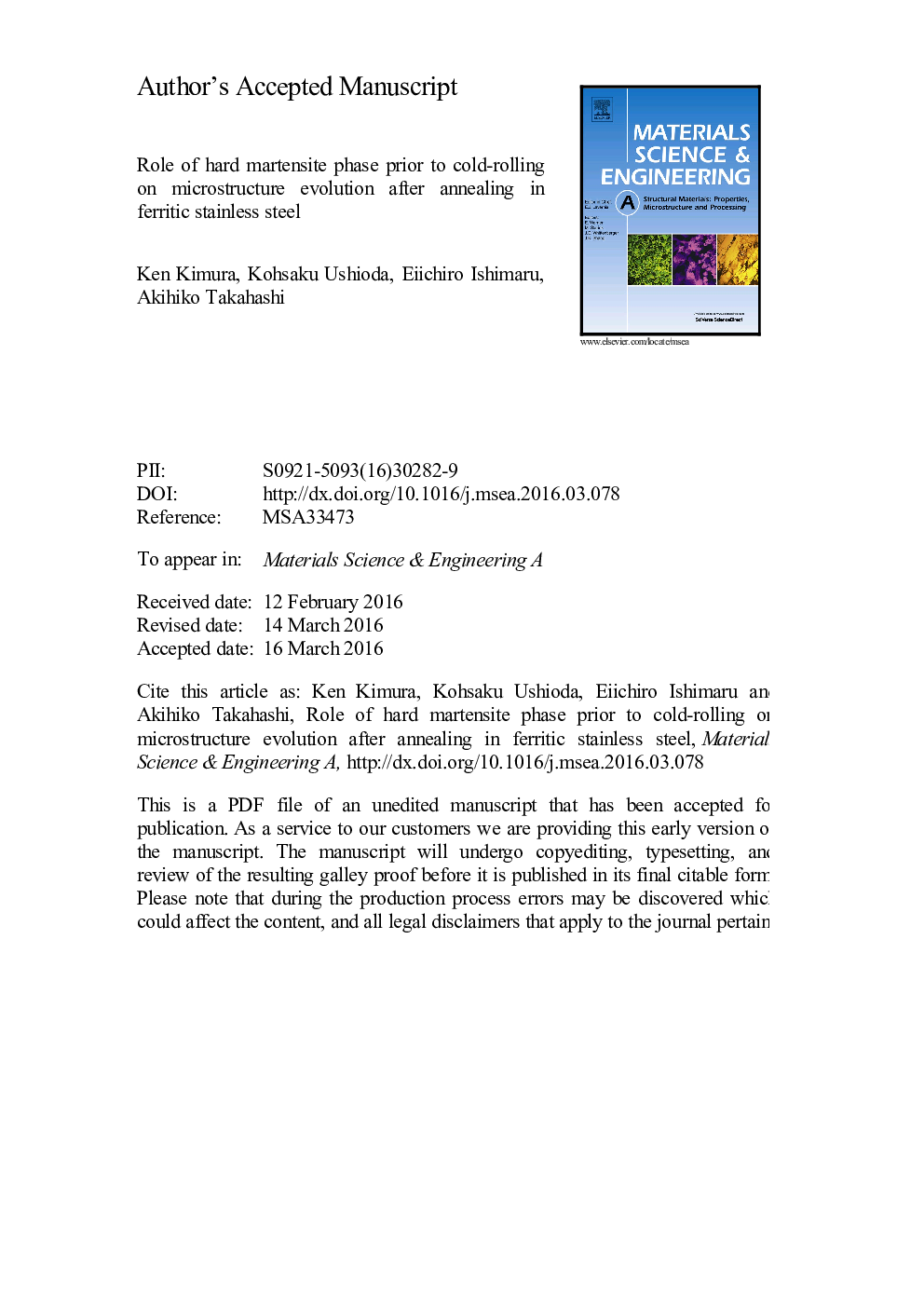| Article ID | Journal | Published Year | Pages | File Type |
|---|---|---|---|---|
| 7975474 | Materials Science and Engineering: A | 2016 | 42 Pages |
Abstract
To improve the surface quality of 16mass%Cr ferritic stainless steel sheets processed by cold-rolling and subsequent annealing, the role of the hard martensite phase, in particular, the hardness ratio k between martensite and ferrite prior to cold-rolling on microstructure evolution was investigated by varying the k value through tempering specimens at different temperatures after intercritical annealing. In the specimen with the high ratio k (k>2.0), the heterogeneous deformation in ferrite around the hard martensite becomes prominent and the areas with the high KAM value are locally limited with less development of cold-rolling texture. The specimen with the small ratio k (k<2.0), however, shows rather uniform deformation structure, because tempered martensite deforms easily. Therefore, the recrystallized grain with the specimen k>2.0 becomes fine, because the presence of hard martensite provides the nucleation site of recrystallization leading to fragmenting the elongated {100}<011>colony structure, and the orientation is randomized. Consequently, the presence of the hard martensite phase prior to cold-rolling is effective for preventing the ridging of ferritic stainless steel sheets.
Related Topics
Physical Sciences and Engineering
Materials Science
Materials Science (General)
Authors
Ken Kimura, Kohsaku Ushioda, Eiichiro Ishimaru, Akihiko Takahashi,
